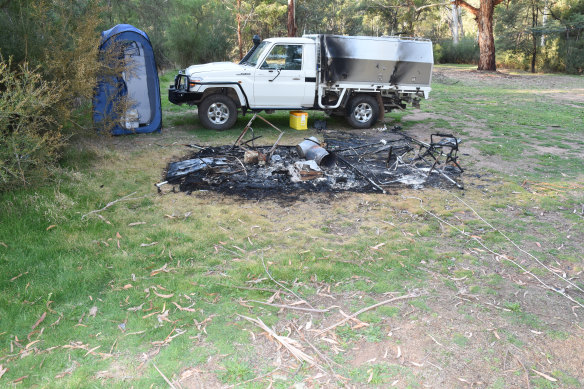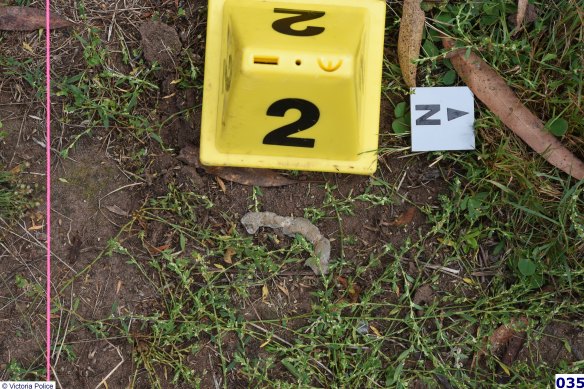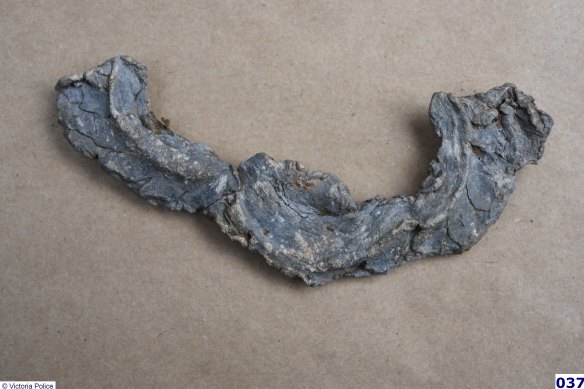Lynn, 57, later shook his head when the expert was asked about how the firearm’s removable box magazine, which contained cartridges, was attached to the shotgun, and took notes throughout with a blue pen, using his right hand.
Griffiths said police had given him a case scenario for testing the firearm.
Former Jetstar pilot Gregory Lynn is on trial over the alleged murders of Carol Clay and Russell Hill.Credit: Monique Westermann
This included information that two men, about six-foot tall, struggled over a firearm on the bonnet of a vehicle when it went off, the shot travelling through a side mirror and into a person crouched near the rear wheel.
“As part of the safety function test, I did a drop test. The gun passed all those tests. In passing, it did not discharge,” Griffiths said. “It showed me the firearm was in good working order.”
Lynn, a former airline pilot, is accused of murdering Hill, 74, and Clay, 73, in Gippsland’s Wonnangatta Valley on March 20, 2020, following a possible dispute over a drone.

The burnt Bucks Camp crime scene.
He then burned the campsite and drove the bodies to a second location where, he told police, he hid then later burned the pair’s remains.
Lynn says the pair died accidentally. The prosecution alleges he killed them with murderous intent.
On Tuesday, Dann grilled Griffiths over his reconstruction testing, which included the trajectory of a projectile that Lynn told police struck and killed Clay during a struggle with Hill for control of the firearm near the bonnet of his vehicle.
Loading
The jury were told Lynn’s account of the fatal struggle was that Clay was accidentally struck in the head as she rose from a crouching position at the rear of Hill’s white Landcruiser 4WD during the scuffle.
Dann said three heights for Clay’s possible position were noted in Griffiths’ gunshot reconstruction notes, but one – a semi-crouching position estimated to be 110 centimetres – was absent from his findings and not presented to the jury by the prosecution.
The lawyer asked the witness whether this result was buried or deliberately withheld, and labelled the exercise “botched”
“I disagree,” Griffiths replied.
Griffiths conceded he conducted a re-enactment using a hypothesis he received from the police informant in charge of the investigation, and did not watch Lynn’s record of interview.
“How high was the gun when it discharged? Where were Mr Lynn’s hands on the gun when it discharged? What angle was the gun on when it discharged?” Dann asked the witness.
Griffiths said he had no idea. “I wish I knew. I don’t know,” he replied.
“I got information from the informant. All my relevant inquiries go through the informant.
“The more information I have, the better it is. It’s that simple. I only had limited information, that’s all I had.”

The lead fragment at the scene.
The court heard that Griffiths visited both the scene of the alleged murders, Bucks Camp, and the location where Hill and Clay’s remains were taken to, Union Spur Track, with a metal detector.
He came across the remnants of a 12-gauge shotgun cartridge, also referred to as a slug, at Bucks Camp during a secondary search of the site two years after the alleged murders.
In examining the fragment, he said that it had been through a “significant” impact.
The ballistics expert noted his job was made harder because there was no crime scene, no car mirror or body to use to help with his reconstructions.

The 12-gauge shotgun cartridge (slug) fragment found at Bucks Camp.
“I had no [car] mirror. No body. They’re the two things that allegedly got struck by a fire projectile, and they don’t exist,” he said.
The trial continues.
A new podcast from 9News, The Age and 9Podcasts will follow the court case as it unfolds. The Missing Campers Trial is the first podcast to follow a jury trial in real time in Victoria. It’s presented by Nine reporter Penelope Liersch and Age reporter Erin Pearson.

